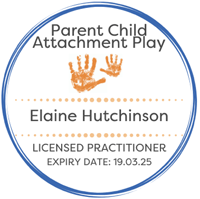As a therapist, I have a range of materials that clients can draw on in their therapy to help them make sense of their experiences and one of the most used by clients is sand. One of the beautiful things about sand is that it’s benefits in therapy are universal and don’t depend on age or artistic ability or even a shared spoken language.
Sand being a universal, natural resource connects us directly to the Earth which helps ground our experiences. Working with sand is also a sensory experience – anyone who has sat on the beach letting sand trickle through their fingers or burying their toes will probably agree. The touch and the movement of playing with sand connects us to power of our imagination – the sand bridging the space between our conscious and unconscious thoughts.
The primary goal of sand tray therapy, whatever the age of the client, is to help them process the issues that brought them the therapy in the first place. Clients are often drawn to the visual and creative elements of creating, building or playing in the sand. Whether they choose to talk, or not the story they are exploring unfolds for them and the therapist and a shared understanding develops.

Some clients tell elaborate stories in the sand with miniatures, others create patterns or mandalas, some simply enjoy the kinaesthetic experience of handling and moving the sand. Other clients choose to add water to their sand tray, or work with both wet and dry sand in different containers or trays adding the sensory experience of water to that of the sand.
Sometimes the shape of the tray itself is important to a client; rectangular trays that can be viewed completely in a single glance are most typical, but some clients prefer a round tray, especially if they are choosing to create a mandala. Regardless of the shape of the tray, it is universally accepted that a tray should be blue on the sides to represent the sky, with blue on the bottom representing water.
Blue is also considered to be the colour of the psyche, encouraging deeper work for the client. It also is known to regulate the body, calming breathing, blood pressure and pulse rate as well as reducing the fight or flight responses in the brain and increasing a client’s ability to work with issues that they perceive as challenging.
Using sand has huge benefits for the client, regardless of how they chose to interact with it. Sand tray therapy allows the client to be themselves and to explore who they are or who they want to be without any need for artistic skills, it allows self-expression and self-exploration with or without words.

Sand also creates some space for the client both from the issues they are exploring and from the fact that by explaining in the sand, they don’t then have to verbalise to another person things which can be incredibly hard to share.
Sand, especially for someone who has experience trauma, seems a very safe place to explore emotions attached to a traumatic event. This may be in part because of the limits that come with sand tray therapy; place, time, size of tray, selection of miniatures, and guidance from the therapist all safely boundary the experience for the client. Some clients compartmentalise issues further by using fencing, barriers or other containers within the sand tray.
Sand is very tactile and the sensory experience of playing with the sand is therapeutic in its own right. Clients often feel more able to share if their hands are busy and sand seems to trigger their ability to go deeper into what they wish to share, whether the sharing is verbal or non-verbal.
For clients who struggle with verbal communication, the sand tray and miniatures allow for a shared symbolic language and the use of metaphor, as well as being therapeutically very powerful, adds a layer of added safety for the client.
Conversely, sand tray therapy also cuts through verbal defence where clients often attempt to re-direct or deflect: sand quickly gets to the true and natural way the client communicates and what it is they need to say.
For a client who struggles, or has struggled, with the lack of physical, emotional or psychological control in their life – especially where trauma or crisis have been involved, the experience of working in a sand tray allows them to experience some re-empowerment as they exercise choice in many areas of working with the sand and choosing the miniatures.
From a neuroscience perspective, sand tray work allows new neural pathways to develop in the brain and increases left and right brain interaction which helps with emotional regulation. Exploring the tray in discussion with the therapist increases the connection between left and right brain hemispheres still further, enabling the client to develop their self-regulation skills even more.

As therapists we wonder, notice and are curious about a client’s sand tray when they share it with us, but we do not directly interpret to them, it is their interpretation that matters most to the therapeutic process, not our curiosity as therapists. Their interpretation does not need to be verbalised to be relevant and important to them and to help them move through the process of therapy.
If you have any questions, please feel free to drop me an email:






